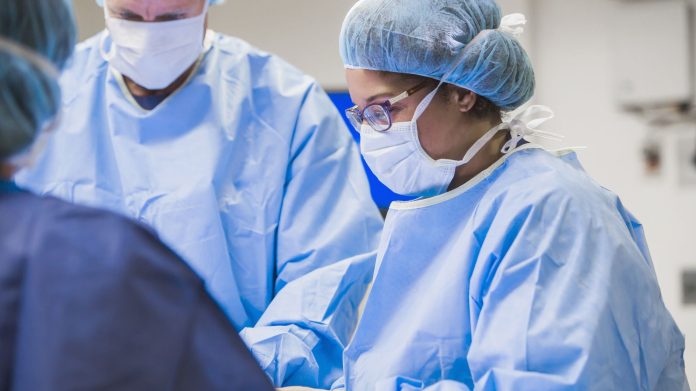Breast reduction surgery works by removing extra fat, tissue, and skin from the breasts. The best plastic surgeon in Mumbai offers the option of breast reduction surgery to relieve discomfort or attain a breast size that is proportionate to your body.
These surgeries can be cosmetic until a patient proves other health problems related to their bigger chest size. Women who have had breast reduction surgeries have reported higher self-esteem and feel comfortable in their skin.
However, as there are several facets to plastic and cosmetic surgeries, anyone considering them should consult a specialist for clarity on the matter.
- Try a nonsurgical option first.
If you’re thinking about having your breasts reduced, talk to your doctor about your complaints and try nonsurgical options first. Surgery can be a big step as it can alter your body’s physiology and immune response. The best plastic surgeon in Mumbai will often advise physical therapy, massage therapy, new bras or support garments, and treatment for rashes or infections as the preliminary steps in nonsurgical treatment.
- Post-surgery recovery can differ.
Because breast reduction entails removing and lifting breast tissue and skin, it’s common to feel bloated, bruised, and unpleasant for a few days following surgery. Most women can go home after surgery but expect to be out of commission for at least two weeks. While some women may be able to return to work sooner, it is critical to give your body the time it needs to recuperate.
Recovery Process
- As long as there are no difficulties, most people can return home a few hours following surgery.
- You will be given precise postoperative instructions before leaving the hospital or clinic. The medical staff will instruct you on what types of oral and topical drugs can help minimize discomfort and scarring and avoid infections.
- Doctors advise a lot of rest as any actions that stretch the chest muscles or rip the sutures can complicate the recovery and hamper the healing process.
- You should avoid heavy lifting for a few weeks or until your sutures are removed by a doctor.
- Your Insurance may not cover cosmetic surgery.
As breast reduction is usually considered a cosmetic procedure getting insurance may be difficult until you can demonstrate a sufficient number of linked health issues and attempts at nonsurgical treatment before undertaking corrective surgery.
If the threshold has been met, the insurance provider may consider breast reduction a reconstructive operation. Your insurance policy will specify the duration you must consider for these additional treatments. Your policy may also specify the minimum quantity of breast tissue that your surgeon must remove once the procedure has been approved.
- Breast reduction can affect breastfeeding abilities.
Breastfeeding is possible following breast reduction surgery, depending on how the operation was done. However, your chances of nursing success are better if the surgeon takes care to protect the nerves and milk duct system.
After breast reduction surgery, most mothers can produce some milk. It can be more difficult to express milk when the nerves aren’t functioning correctly. However, you can always talk to a lactation consultant for tips on improving milk production.
- Not ideal for older women
Studies have found a higher likelihood of infections—and possibly other complications—in women over 50 who have undergone breast reduction surgery. The higher risk is most likely due to hormone level reductions as people get older.
Furthermore, infections are less likely in women who had hormone replacement treatment. Meanwhile, women who had a hysterectomy or removal of the ovaries, which resulted in dramatic reductions in hormone levels, have a significant infection rate.
- The final result takes time.
The size and looks of your breasts will continue to change as they recuperate. In fact, removing all of the edema could take many months. Successful surgery can ease pain in the upper back, neck, and shoulders. It will also improve your ability to engage in sports, yoga, weightlifting, etc. while promoting a more positive self-image.
Doctors will tell you to keep in mind that the swelling will subside, and the surgical scars will diminish with time. Breast shape and size can change due to aging and weight gain, but the ultimate effect of a reduction is usually permanent. Your breast right after surgery and a couple of months after surgery may look different.
Risks of a breast reduction surgery
- Open wounds or cuts that take a long time to heal
- Cellulitis or infection of the connective tissue
- Numbness of the nipples and surrounding skin
- Anesthesia or other drugs might cause allergic responses.
- Temporary bruising
- Scarring
- Difficulty or inability to breast-feed
- Asymmetric shape and size of the left and right breasts
Conclusion
Breast reduction was considered cosmetic surgery and wasn’t considered a necessary medical treatment. With more awareness and body-positive mentalities of people, breast reduction surgery has become accessible and reliable. Reduction surgery has helped women with bigger or disproportionate breasts cope with various issues such as persistent back, shoulder, and neck pain, skin rashes, difficulties exercising, and limited wardrobe alternatives. When done by the hands of the best plastic surgeon in Mumbai women report an improvement in their overall quality of life.









